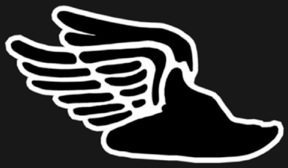Back
Shoulders
Arms
Legs
Abdominals
These are the basic muscle groups that you need to exercise in the GYM. Each group functions differently and each involves a different set of exercises. NEWBS have to remember than not one muscle group is more important than the other thus all groups should be exercised. Also, all PRT programs include abdominal exercises. Without strong abdominals, you do not have a strong base for lifting heavy weights above your head and may cause injuries in the future.
All gym enthusiasts must have accessories to help them in their programs or prevent injuries. Gym equipments include gloves (unless you want rough hands), a face towel and water canteen. For the serious weightlifters, you should at least have lift straps (to help PULL weights when your forearms are shot) and a Weight Belt (to increase abdominal pressure and thereby providing a strong base or trunk. NOTE: When putting on the belt, inhale and tuck in your stomach/belly then strap your belt until a tight fit is noted. CLUE: Try and insert your hand between the belt and your back. If you can insert your hand then it is not tight enough. Make sure that when your stomach pushes forward the belt pulls your back). Personal hygeine materials like towels are advised while deodorants are REQUIRED.
I will start this blog with my favorite muscle group (CHEST / PECTORALS) and will individually discuss each muscle group in the next blog.
CHEST / PECTORALS / PECS

-These are divided into fibers and each fiber provides a different action thus are exercised individually.
-These are very strong muscles and are mainly responsible for pushing exercises.
-These muscles need the help of the TRICEPS and DELTOIDS/ SHOULDERS to act efficiently.
Upper Chest
LOCATION: just below the clavicles
EXERCISES:
1. Inclined press (barbell/BB or dumbbell/DB)
2. Inclined Fly (DB). Bend your elbow around 5-10 degrees during the entire execution of this exercise. DO NOT "FLY" with straight elbows.
--Note: Fly exercises are more difficult than press exercises and therefore are not appropriate for newbs. FLY exercises develops the "RIPPED" form of any muscle thus if your muscles are still underdeveloped, DO NOT USE FLY EXERCISES.
3. Head-Down Push-Ups. Plant your foot higher than your head prior to start of push-up.
Middle Chest
LOCATION: Forms the bulk of the chest and provides power the chest muscles
EXERCISES:
1. Bench Press (BB or DB)
2. Bench Fly (DB). All fly exercises should feel the stretch the muscle exercised. Never stretch your muscles more that normal limits to prevent injury to shoulders.
3. Regular Push-ups. NOTE: During the exercise, the back and legs should maintain a straight line to maximize exercise. Never bend at the hips during execution of this exercise.
Lower Chest
LOCATION: cause the bulge of the lower part of the chest
EXERCISES: (All done head down position with angle ~30-45 degrees from floor
1. Declined Press (BB or DB)
2. Declined Fly
3. Cable Crossover. Use Machine for cable crossover. Exercise in different angles to improve underdeveloped muscles.
4. Dips (Free/F or machine/M). Lean forward around 20-30 degrees to HIT Pec muscles. Dips with body perpendicular to floor will HIT triceps muscles predominantly.
5. Pullovers. Feel the stretch of the PECs to properly hit the muscle. This muscles can be used for shoulders, Pecs and back muscles depending on the execution.
GENERAL RULES TO CHEST EXERCISES
1. Never press more the what you can push UNLESS in the presence of a SPOTTER.
2. FORM is the key. Heavy load with poor form are wasted sets.
3. Do a warm-up set prior to 1st HEAVY set to warm muscle and familiarize movement. Use load which you can do 12-15 reps with moderate difficulty.
4. If unable to complete 6 reps in a set due to high load, drop ~50% of current weight without rest and press to failure. FEEL THE WARMTH OF THE MUSCLES WHEN THEY FAIL.
5. Allow at least 2 DAYS for your PECS to recover before exercising them again.
6. Never combine Shoulders and Pecs in one program day. This will reduce your PEC load since DELTOIDS/DELTS are needed to stabilize the shoulder joint. If combined, Load will not be as heavy and joints are prone to injury.
7. PECs and DELTs are synergistic muscles thus do not develop without development of the other.























